Best Electric Guitars for Beginners: Top Picks & Buying Guide
Category: Guitar Gear
Find Your Perfect Beginner Electric Guitar
Starting your journey as an electric guitarist can be thrilling yet overwhelming. You’ve searched for the best electric guitars for beginners because you want an instrument that inspires practice, sounds great, and won’t break the bank. Whether you’re a total novice eager to play your favorite riffs or a hobbyist wanting to explore different genres and tones, choosing the right guitar is crucial to building confidence and enjoying every practice session. This post dives deep into the top beginner-friendly electric guitars, balancing quality, playability, and value—because starting with the right gear can set you up for years of musical growth. We also explore essential features, common beginner mistakes to avoid, and how different styles and production needs factor into your choice. Unlike generic lists, this guide caters to guitar enthusiasts who are serious about improving their skills and want practical advice on gear that supports learning and creativity. Ready to cut through the noise and find the guitar that hits all the right notes? Keep reading to discover your ideal beginner electric guitar and start your playing journey on the right fret.
- Find Your Perfect Beginner Electric Guitar
- Understanding What Makes an Electric Guitar Ideal for Beginners
- Top 5 Best Electric Guitars for Beginners in 2024: Detailed Reviews and Comparisons
- Different Body Types and Their Impact on Sound and Comfort
- Pickup Types and Electronics Basics: Single-Coil vs. Humbuckers and How Pickups Affect Tone for Beginners
- Essential Guitar Accessories Every Beginner Needs
- How to Choose the Right Guitar for Your Style and Music Goals
- Setting Up Your Beginner Guitar for Optimal Playability: Adjusting Action, Tuning, and Intonation
- Budgeting Tips: Finding Quality Guitars Without Overspending and When It’s Worth Investing More
- Common Beginner Mistakes to Avoid When Buying Your First Electric Guitar
- Getting Started with Basic Playing Techniques and How the Right Guitar Can Enhance Learning
Understanding What Makes an Electric Guitar Ideal for Beginners
Choosing the best electric guitar for beginners goes beyond just aesthetics or brand reputation. Playability, comfort, and durability are the cornerstone features that define an ideal beginner instrument. For a new player, an electric guitar should feel intuitive and effortless to play, encouraging longer practice sessions without causing fatigue or frustration. This means factors like a lightweight body, smooth fretboard, and low action (string height) are crucial for easy finger movement and chord transitions.
Comfort also means the guitar’s shape and size suit the player’s body type and posture, preventing strain during practice. Likewise, durability is vital since beginner guitars must withstand the bumps and knocks of regular use without frequent repairs. Solid construction, reliable hardware, and quality materials contribute to longevity and a consistent sound, making your first investment something that grows with your skill level. Keep these features in mind to ensure your beginner guitar supports your journey with ease, providing both fun and functionality from the very first note to advanced playing techniques.

Image courtesy of Ash Craig
Top 5 Best Electric Guitars for Beginners in 2024: Detailed Reviews and Comparisons
When it comes to selecting the best electric guitar for beginners in 2024, the array of options can be overwhelming. To help you make an informed decision, we’ve meticulously reviewed and compared five popular starter models based on playability, tone versatility, build quality, and value for money. Each guitar in this list has earned its place by offering user-friendly features that cater to new players while providing room to grow as skills improve.
1. Squier by Fender Stratocaster Beginner Pack
Pros:
- Classic Stratocaster design known for its versatility
- Comfortable C-shaped neck profile that’s easy for small hands
- Includes gig bag, tuner, and cable—perfect for beginners
- Three single-coil pickups deliver bright, clear tones suitable for rock, blues, and pop
Cons:
- Pickups can be prone to noise interference
- May require setup adjustments for optimal action out of the box
The Squier Stratocaster remains a staple for beginners because of its lightweight body and smooth playability. Its classic single-coil tone fosters exploration of many popular music genres, making it ideal for players who want both style and sound range.
2. Yamaha Pacifica Series PAC112V
Pros:
- Excellent build quality and craftsmanship at an affordable price
- HSS pickup configuration offers more tonal flexibility
- Slim neck and well-crafted fretboard ensure comfortable play
- Reliable hardware minimizes maintenance
Cons:
- Slightly heavier body than other beginner models
- Tone may require amp or pedals adjustment for some styles
Yamaha’s Pacifica series is praised for balancing durability and professional features in a beginner package. The HSS pickups allow learners to experiment with clean, crunch, or heavier distortion sounds, ideal for musical diversity.
3. Epiphone Les Paul Special II
Pros:
- Iconic Les Paul shape with a warm, full-bodied tone
- Dual humbucker pickups reduce unwanted noise, perfect for rock and metal
- Sturdy construction suitable for long-term learning
- Affordable price point
Cons:
- Heavier body that might tire out smaller players
- Limited pickup switching options compared to more expensive models
For beginners drawn to classic rock or heavier genres, the Epiphone Les Paul Special II offers solid build and powerful humbuckers that deliver a rich sound. It’s an excellent choice if you prefer the Les Paul aesthetic combined with beginner-friendly features.
4. Ibanez GRX70QATE
Pros:
- Lightweight and ergonomic body design for prolonged playing comfort
- Versatile HSH pickup configuration covers a wide tonal spectrum
- Fast, thin neck ideal for lead playing and shredding
- Attractive finishes that appeal to players of all ages
Cons:
- Included hardware can feel less premium
- May require setup for optimum playability
Ibanez’s GRX70QATE stands out with its sleek design and fast neck, appealing to beginners excited to experiment with different playing styles. Its versatile pickup setup allows easy transition from blues to heavier rock tones.
5. Fender Player Series Telecaster
Pros:
- Classic Telecaster twang with modern playability improvements
- Lightweight alder body reduces fatigue during practice
- Reliable tuning stability and quality hardware
- Simple controls perfect for beginners
Cons:
- Limited onboard tonal options compared to other models
- Slightly higher price point
The Fender Player Series Telecaster is a favorite for beginners seeking timeless tone and straightforward controls. Its bright, punchy sound supports many genres, from country and indie rock to blues.
Choosing the right electric guitar depends heavily on your preferred musical style, comfort, and budget. Each of these models offers qualities that make learning easier and more enjoyable, ensuring that your initial investment provides both value and inspiration on your musical journey. In the following sections, we’ll explore essential accessories and setup tips to get the most from your new beginner guitar.
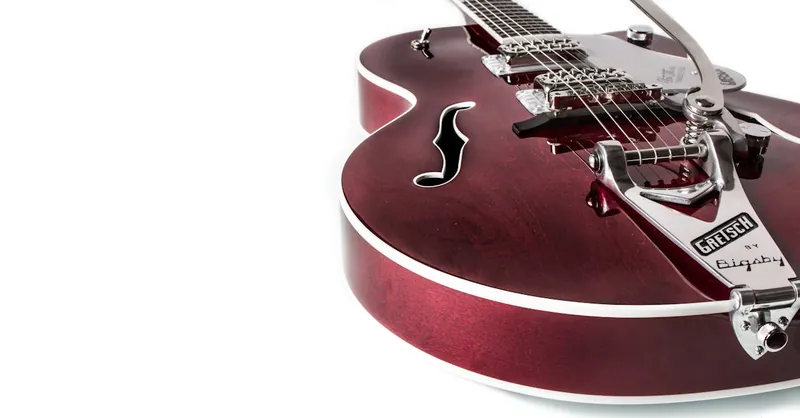
Image courtesy of Ash Craig
Different Body Types and Their Impact on Sound and Comfort
When exploring the best electric guitars for beginners, understanding the differences between solid-body, semi-hollow, and hollow-body guitars is essential. These body types not only affect the guitar’s tone but also influence playing comfort and suitability for various music styles, which can be decisive factors for new players.
1. Solid-Body Guitars
Solid-body guitars are the most common choice for beginners due to their durability, feedback resistance, and tonal versatility. Constructed from a solid slab of wood, these guitars provide a sustained, bright, and focused sound that works well across rock, blues, pop, and metal genres. Their relatively compact and often lightweight design typically offers excellent comfort for extended practice sessions, making them ideal for players still developing stamina.
Benefits of solid-body guitars:
- Minimal feedback at high volume levels
- Wide tonal range depending on pickups and amp settings
- Usually lighter and more robust under frequent handling
This body type is perfect for beginners who want an all-around instrument that adapts well to different playing techniques and effects pedal setups.
2. Semi-Hollow-Body Guitars
Semi-hollow guitars blend elements of both solid and hollow bodies by featuring a solid center block with hollow wings. This design produces a richer, warmer tone compared to solid-body guitars, adding a bit of natural resonance without excessive feedback. They balance sustain and acoustic qualities, delivering a unique voice favored in jazz, blues, and indie rock.
Key aspects of semi-hollow guitars for beginners:
- Warm, resonant sound with a slight acoustic character
- Reduced feedback compared to fully hollow guitars
- Medium weight—comfortable yet substantial feel
For beginner guitarists interested in genres requiring a mellower tone or expressive dynamics, semi-hollow guitars offer a great middle ground between comfort and sonic depth.
3. Hollow-Body Guitars
Hollow-body guitars are characterized by their fully hollow interior, similar to acoustic guitars, and typically larger bodies. They produce a warm, full tone with rich resonance suited for jazz, swing, and classic rock styles. However, their large size and tendency to generate feedback at high volumes can be challenging for beginners still honing control and volume management.
Considerations for hollow-body guitars:
- Rich, warm, and natural acoustic sound
- Larger and often heavier body that may affect comfort
- More susceptible to feedback, especially with high-gain amplification
While hollow-body guitars can be rewarding for carefully controlled playing environments, beginners should carefully weigh their comfort preferences and style goals before choosing this body type.
Selecting the right guitar body type is a foundational decision that impacts your playing experience and sound exploration. Beginners often find solid-body guitars most accessible, but semi-hollow and hollow-body options offer distinct tonal qualities worth exploring as your skills and musical tastes evolve. Knowing how each body type shapes your tone and comfort will guide you to a guitar that inspires long-term growth and enjoyment.
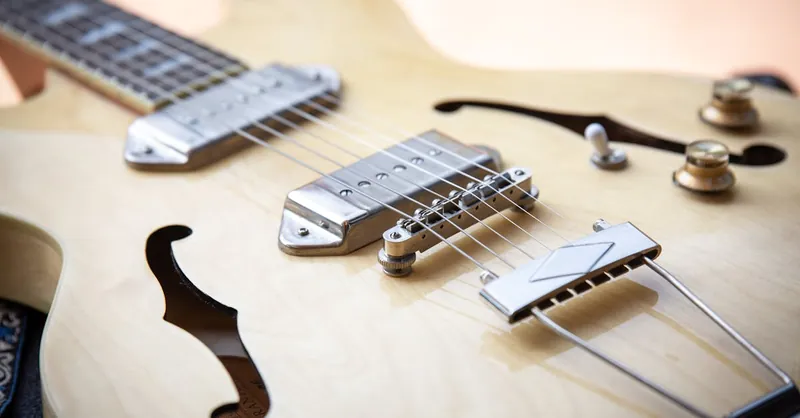
Image courtesy of 전주홍
Pickup Types and Electronics Basics: Single-Coil vs. Humbuckers and How Pickups Affect Tone for Beginners
Understanding pickup types is crucial for beginners because pickups are the heart of an electric guitar’s sound. The two most common types you'll encounter are single-coil pickups and humbuckers, each offering distinct tonal characteristics and affecting your playing experience dramatically.
Single-Coil Pickups
Single-coil pickups consist of a single magnet wrapped with wire and are known for producing a bright, clear, and crisp tone. They excel at delivering sparkling high-end frequencies and articulate note definition, making them ideal for genres like rock, pop, country, and blues. However, single-coils tend to be more susceptible to electrical interference, which can cause a noticeable hum or buzz, especially when using high-gain amplifiers or effects pedals.
Key features of single-coil pickups:
- Bright and punchy sound that highlights nuances in playing
- Excellent for clean tones and styles requiring clarity
- Prone to 60-cycle hum and noise in certain environments
- Typically found on Fender Stratocasters and Telecasters
For beginners, single-coils inspire experimentation with dynamics and tone shaping but be prepared for some background noise that can often be mitigated with proper amp settings or noise suppressors.
Humbucker Pickups
Humbucker pickups combine two coils wired out of phase, effectively canceling out the electrical hum single-coils produce. This results in a thicker, warmer, and more powerful tone with higher output. Humbuckers are particularly favored in rock, metal, jazz, and other genres that benefit from a fuller, fatter sound. Because of their noise-canceling design, humbuckers deliver cleaner signals at high gain, making them especially useful for distorted, overdriven sounds.
Advantages of humbuckers include:
- Reduced noise and hum for a cleaner signal
- Warm, rich midrange and bass frequencies
- Higher output suitable for distortion and sustain
- Commonly found in Gibson Les Pauls and Epiphone models
Beginners choosing humbuckers often appreciate the forgiving tonal warmth and lower noise floor, which can make practicing with effects pedals and amps more enjoyable.
How Pickups Affect Tone for Beginners
Your guitar’s pickups directly influence not only the sound but also how easy it is to dial in your desired tone. For beginners, knowing the tonal tendencies of pickups helps in selecting a guitar that matches their preferred style and sound goals:
- Single-coils are great if you want clear, articulate riffs with a bright edge — perfect for clean tones, funk, and classic rock.
- Humbuckers offer a thicker, more powerful tone that excels at high-gain, saturated styles like rock and metal but also smooths out warmer jazz sounds.
- Many beginner guitars come with versatile pickup configurations (like HSS or HSH) combining single-coils and humbuckers, allowing greater tonal experimentation without needing multiple guitars.
Choosing the right pickups ensures your guitar naturally suits your evolving musical taste, making practice sessions more engaging and encouraging continual improvement. Whether you lean towards shimmering single-coil clarity or the punchy power of humbuckers, understanding pickup basics empowers you as a beginner guitarist to make informed decisions and explore your tone palette confidently.
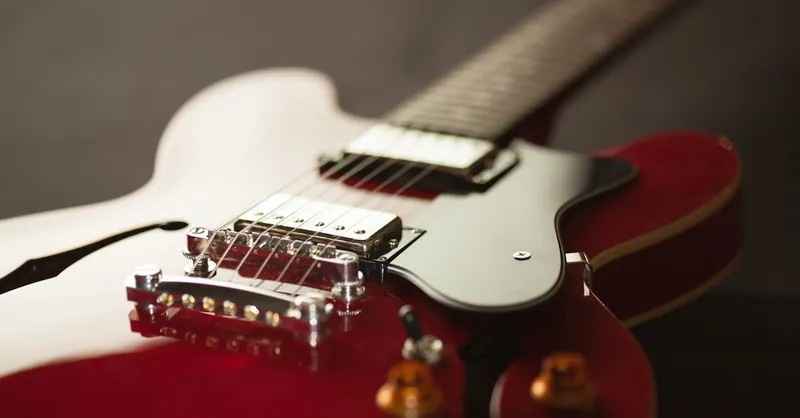
Image courtesy of Méline Waxx
Essential Guitar Accessories Every Beginner Needs
Starting with the right electric guitar accessories is just as crucial as choosing your first guitar. These accessories not only enhance your playing experience but also help you maintain your instrument and develop good habits early on. For beginners, investing in a quality amp, cables, tuner, strap, and beginner-friendly effects pedals can significantly improve your sound and provide motivation to practice consistently.
Amplifiers
A reliable guitar amplifier is indispensable for shaping your electric guitar tone and getting the most out of your playing. Beginners should look for amps that offer clear sound, adjustable EQ controls, and built-in effects like reverb or distortion to experiment with different styles without extra gear. Combo amps with a manageable wattage (10-30 watts) are ideal, providing enough volume for practice at home or small jam sessions without overwhelming noise. Brands like Fender, Boss, and Yamaha produce beginner-friendly amps that balance quality and affordability.
Instrument Cables and Tuners
Good-quality instrument cables ensure your signal remains strong and free from unwanted noise or interference. Look for cables with sturdy connectors and durable shielding to withstand frequent plugging and unplugging. Alongside cables, a precise and easy-to-use guitar tuner is essential for developing your ear and maintaining accurate pitch. Clip-on tuners with bright displays or pedal tuners that integrate easily with your rig are both excellent choices. Regular tuning is key for achieving a professional sound and building confident playing skills.
Guitar Straps and Picks
Comfort during practice is vital, especially for beginners who might spend long periods holding their instrument. A well-padded, adjustable guitar strap helps distribute the guitar’s weight evenly and supports good posture. Choose straps made from materials like nylon or leather for durability and comfort. Additionally, having a variety of guitar picks in different thicknesses allows you to explore tone and picking dynamics, finding what best suits your style.
Beginner-Friendly Effects Pedals
While effects pedals can be complex, some beginner-friendly pedals open new sonic possibilities without overwhelming novices. Popular starter pedals include:
- Overdrive/Distortion Pedals: Great for rock and blues tones, these pedals add grit and sustain.
- Delay and Reverb Pedals: These create space and depth, enriching your clean tones.
- Tuner Pedals: Combining tuning with effects control in one unit.
Pedals like the Boss DS-1 Distortion or the TC Electronic Hall of Fame Reverb are often recommended for beginners due to their intuitive controls and versatile sound.
Equipping yourself with these essential guitar accessories lays a solid foundation for practice and performance. Having the right gear not only improves your sound but also keeps you inspired and engaged, making your transition from beginner to confident player smoother and more enjoyable.

Image courtesy of Yusron El Jihan
How to Choose the Right Guitar for Your Style and Music Goals
Selecting the best electric guitar for beginners isn't just about finding the most visually appealing model or the lowest price; it’s about matching the guitar’s features to your preferred musical style and long-term goals. Different genres like rock, blues, metal, and pop require distinct tone qualities, playing comfort, and hardware characteristics that can directly impact your learning experience and satisfaction.
Matching Guitar Features with Musical Genres
-
Rock:
Rock players often prioritize guitars with humbucker pickups for their thick, powerful sound and reduced noise, which handles distortion and overdrive exceptionally well. Models like the Epiphone Les Paul Special II or Ibanez GRX70QATE fit perfectly here due to their warm tones and versatile pickup configurations. A solid-body design with a strong midrange presence supports aggressive strumming and lead playing. -
Blues:
Blues guitarists usually seek a clear, expressive tone that captures subtle dynamics. Single-coil pickups, like those found on the Squier Stratocaster, excel at providing bright, articulate notes and a natural "growl" when pushed. Comfortable neck profiles and modest body weights help beginners focus on bends and vibrato techniques, while semi-hollow body guitars can offer an added warmth if you desire. -
Metal:
For metal beginners needing intense, high-gain sound, guitars equipped with humbucker pickups and fast, thin necks are essential. The Ibanez GRX70QATE, with its HSH pickup setup, offers the tight, aggressive tone metal demands alongside comfortable playability for fast riffs and shredding. Heavier, durable bodies also contribute to sustained notes crucial in metal styles. -
Pop:
Pop music players benefit from guitars with versatile tonal options that cover clean, bright sounds and mild overdrive. Models with an HSS pickup configuration, such as the Yamaha Pacifica PAC112V, offer the flexibility to switch between sparkling single-coils and warmer humbuckers, making them adaptable for varied pop rhythms and lead lines. Lightweight solid-body designs improve ease during long practice sessions.
By clearly identifying your primary genre and musical goals, you can choose a beginner electric guitar whose construction, pickups, and body type naturally support the sound and playing style you aspire to master. This targeted approach helps ensure your new instrument not only inspires daily practice but also grows with you as you refine your unique voice as a guitarist.

Image courtesy of Breakingpic
Setting Up Your Beginner Guitar for Optimal Playability: Adjusting Action, Tuning, and Intonation
Once you’ve chosen your ideal beginner electric guitar, proper setup is crucial to ensure optimal playability and a satisfying playing experience. Setting up your guitar correctly helps reduce finger fatigue, improves tone clarity, and allows you to develop good technique from the start. Three key aspects to focus on are adjusting the action, tuning your guitar precisely, and setting the intonation accurately.
1. Adjusting the Action for Comfortable Playability
Action refers to the height of the strings above the fretboard. If the strings sit too high, pressing them down becomes difficult, causing finger discomfort and discouraging practice. Conversely, if the action is too low, strings may buzz against the frets, producing unwanted noise. For beginners, a low-to-medium action height is ideal for effortless fretting while maintaining clean notes.
To adjust the action:
- Check the string height at the 12th fret using a ruler or feeler gauge.
- Use the truss rod to adjust the neck relief if the neck has too much bow or back-bow, which affects string height.
- Raise or lower the bridge saddles to fine-tune string height and balance between strings.
By keeping the action comfortable, you’ll minimize strain on your fretting hand and encourage longer, more productive practice sessions.
2. Properly Tuning Your Guitar: The Foundation of Great Tone
Mastering tuning is fundamental for beginners since even the best guitar sounds unpleasant if out of tune. Use a reliable guitar tuner, preferably a clip-on chromatic tuner, which provides quick and accurate feedback. Tune your guitar strings to standard tuning (E A D G B e) before each practice or playing session.
Regular tuning habits improve your ear and help you recognize pitch discrepancies. Additionally, check tuning stability frequently, especially after changing strings or adjusting hardware. If tuning issues persist, consider inspecting the tuning machines or nut slots for mechanical problems.
3. Setting Intonation for Accurate Pitch Along the Fretboard
Intonation ensures each fret produces the correct pitch when the string is fretted, which is critical for playing in tune across the neck. Poor intonation causes notes to sound sharp or flat despite the open string being in tune.
To adjust intonation:
- Play the 12th fret harmonic and compare it to the fretted 12th fret note on each string using a tuner.
- If the fretted note is sharper than the harmonic, move the saddle back (away from the neck) to lengthen the string.
- If the fretted note is flatter, move the saddle forward to shorten the string length.
- Repeat this process string by string for precise intonation.
Setting intonation correctly ensures your chords and melodies maintain consistent pitch, which is especially important when playing with other musicians or backing tracks.
By dedicating time to set up your beginner electric guitar with proper action, tuning, and intonation, you create the best possible foundation for developing your skills and enjoying the learning process. This investment in setup reduces physical strain, improves sound quality, and increases your motivation to play regularly—key factors that support steady progress on your guitar journey.
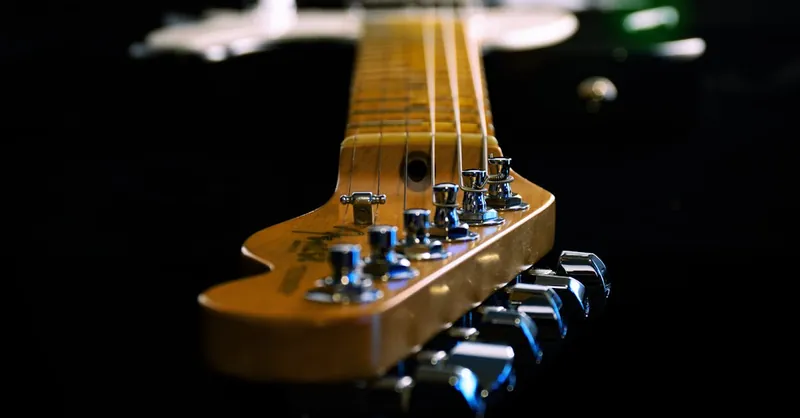
Image courtesy of Brett Sayles
Budgeting Tips: Finding Quality Guitars Without Overspending and When It’s Worth Investing More
When starting out on electric guitar, budgeting wisely is essential to ensure you get a quality instrument that supports learning without overspending on features you don’t yet need. Many beginners make the mistake of either opting for the cheapest guitar available, which often compromises playability and sound, or splurging on high-end models that surpass beginner requirements and strain finances. Knowing how to balance cost with quality can save you money while setting you up for success.
Finding Quality Guitars on a Budget
- Set a Realistic Price Range: Aim for guitars in the $150-$500 range as this offers the sweet spot for solid beginner instruments. Models like the Squier Stratocaster and Yamaha Pacifica series are excellent examples of affordable guitars that provide good tone, reliable hardware, and comfortable playability.
- Prioritize Essential Features: Instead of focusing on brand names or flashy finishes, look for guitars with comfortable neck profiles, decent pickups (even stock ones), and stable tuning machines. These factors have more impact on your early learning than premium woods or boutique electronics.
- Consider Used or Refurbished Guitars: Buying a gently used guitar from a trusted source can get you a higher-quality model within your budget. Always check for playability issues like fret buzz, neck warping, or hardware condition before purchasing.
- Starter Packs Can Offer Value: Beginner packs that bundle a guitar with amp, tuner, and accessories provide excellent value and convenience, especially for those new to gear setup. Just ensure the guitar itself meets quality standards and doesn’t sacrifice playability.
When It’s Worth Investing More
While budget guitars serve most beginners well, there are circumstances where investing in a higher-priced instrument pays off:
- Long-Term Commitment: If you’re confident about pursuing guitar seriously and expect to practice daily for years, spending $600-$1000 on a well-crafted guitar can provide superior tone, playability, and durability that enhances learning and motivation.
- Specific Musical Styles: Certain genres require particular tonal qualities or hardware—for instance, a metal player might benefit from a mid-range guitar with quality humbuckers and a fast neck instead of a budget model that struggles with high-gain tones.
- Advanced Features: Enhanced electronics, better fretwork, and premium woods contribute to a more responsive instrument that can ease transitions into complex techniques and performance environments.
- Resale Value: Higher-quality guitars generally retain value better, making it easier to upgrade later without significant financial loss.
In summary, beginners should aim to balance cost versus quality by choosing guitars that emphasize playability, sound, and reliability within a reasonable budget. Avoid chasing the cheapest option or overspending early on; instead, focus on guitars that inspire you to practice regularly and match your musical goals. When your skills and dedication increase, consider upgrading to instruments that offer enhanced features aligned with your style and aspirations. This approach ensures your investment in an electric guitar supports steady growth and enjoyment throughout your learning journey.
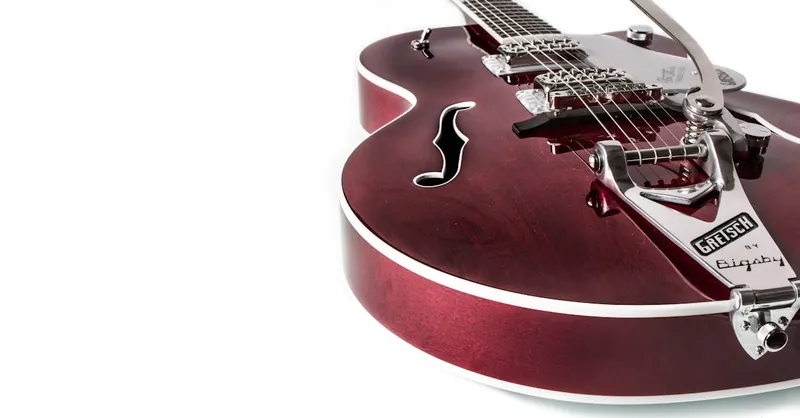
Image courtesy of Ash Craig
Common Beginner Mistakes to Avoid When Buying Your First Electric Guitar
Choosing your first electric guitar is an exciting step, but many beginners fall into common pitfalls that can affect their playing experience and enthusiasm. Avoiding these mistakes ensures you invest wisely in an instrument that truly supports your growth as a guitarist.
1. Prioritizing Looks Over Playability
While a guitar’s aesthetics like color or body shape can be appealing, focusing solely on appearance often leads to discomfort and frustration. A beautiful guitar with a heavy body, thick neck, or high action can make practicing difficult and discourage regular play. Instead, prioritize a guitar with a comfortable neck profile, manageable weight, and smooth fretboard action, which are key to developing good technique and enjoying every session.
2. Neglecting Proper Setup
Many beginners purchase guitars straight from the box without realizing that factory setups are rarely optimized for playability. High string action, poor tuning stability, or improper intonation can cause difficulty in fretting notes and tuning issues that impede learning. Investing time or money for a professional guitar setup—adjusting the action, tuning, and intonation—can dramatically improve comfort and sound quality, setting a solid foundation for progress.
3. Overlooking Pickup Types and Tonal Needs
Beginners sometimes choose guitars without considering how pickup configuration affects tone, leading to disappointment when the guitar doesn’t sound like expected. For example, single-coil pickups excel at bright, clean tones but may not suit heavy distortion styles, while humbuckers fit rock and metal better but can sound muddy for blues or pop. Researching or testing guitars based on your preferred musical style ensures the instrument’s electronics complement your tone goals.
4. Buying Cheap Guitars with Poor Build Quality
It’s tempting to pick the lowest-priced guitars, but extremely cheap instruments often have substandard hardware, high fret buzz, tuning instability, and thin tone, which can hinder skill development. Aim for guitars within a reasonable budget that offer decent craftsmanship and reliable components, or consider reputable entry-level brands known for beginner-friendly models. Quality matters for long-term motivation and learning success.
5. Ignoring Necessary Accessories
Skipping essential accessories like a tuner, strap, amplifier, or reliable cables can reduce practice quality and create unnecessary obstacles. A poor amplifier or lack of tuning tools leads to an unpleasant playing experience and inaccurate pitch recognition. Including these in your purchase plan ensures your new guitar sounds its best and supports consistent practice.
By avoiding these common beginner mistakes, you'll find an electric guitar that feels right, sounds inspiring, and encourages steady improvement. Thoughtful choices about playability, setup, tone, and supporting gear turn your first guitar buying experience into a solid stepping stone toward becoming a confident player.

Image courtesy of ROMBO
Getting Started with Basic Playing Techniques and How the Right Guitar Can Enhance Learning
Starting with fundamental playing techniques is vital for any beginner aiming to build a strong foundation on the electric guitar. Mastering basics such as proper finger positioning, strumming patterns, chord transitions, and basic scales helps develop dexterity, timing, and musicality early on, setting the stage for more advanced skills. Importantly, the right beginner guitar significantly enhances this learning process by offering comfortable playability and responsive action that make these techniques easier to practice without strain or frustration.
A guitar with a smooth neck profile and light string tension reduces finger fatigue, encouraging longer practice sessions essential for muscle memory development. Additionally, a guitar equipped with versatile pickups allows beginners to experience different tones—clean, crunchy, or distorted—helping them understand how technique affects sound in various musical contexts. For instance:
- Easier chord shapes and smooth transitions motivate consistent repetition.
- Responsive frets and well-set action allow clearer note articulation for scales and riffs.
- Versatile tone options inspire experimentation with playing styles, keeping motivation high.
Investing time in learning core techniques on a beginner-friendly guitar creates a positive feedback loop, where improved comfort and sound quality directly lead to quicker skill acquisition and greater musical enjoyment. Whether you are tackling your first power chords or improvising simple solos, the synergy between good technique and the right instrument plays a crucial role in accelerating your growth as a guitarist.
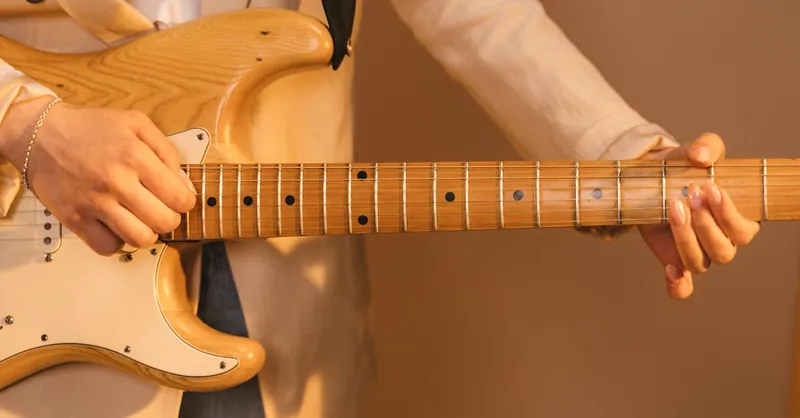
Image courtesy of ANTONI SHKRABA production
